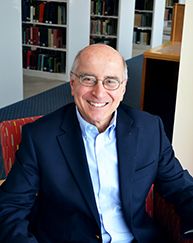Harry Paidas: Learning from past conspiracy theories

Are you getting tired of conspiracy theories?
I know I am.
For starters, my mind is conspiring to tell my body that my shogging (shuffling and jogging) days are nearing an end.
“Come on,” says my mind. “You are in your late 60s; you have had a meniscus tear, IT band syndrome, an aching back, your pace has slowed to a crawl – what is the point? People your age are supposed to pick weeds, go for walks and bird-watch. Do you actually believe that what you are doing is making you healthier? If that were the case, why are you sometimes the only person in your age bracket in those 5Ks?”
My mind is making a convincing case conspiring to derail me from what I have always believed to be a common sense approach to a healthier lifestyle.
By introducing doubt, the mind has forced me to weigh the facts and make the decision that makes the most sense to me.
That’s the way it works with conspiracy theories. By injecting doubt, we are subjected to other possibilities that we need to consider by accepting or rejecting our original way of thinking.
My experience with conspiracy theories throughout my life has been interesting. I have usually approached these theories with an open mind. That is, if the alternative view has some merit, it may be worth exploring further before dismissing it.
The most famous conspiracy theory of my lifetime was that Lee Harvey Oswald did not act alone in the assassination of President John Kennedy. I don’t know how many books and articles I have read, nor do I remember how many times I viewed the famed Zapruder film. I even read a good part of the multipage Warren Commission Report (they actually assigned commissions back then).
But as interesting as all that has been, here we are nearly 60 years later and the people who want to believe Oswald acted alone will continue to believe it, and the people who want to believe others were involved will hold fast to that belief. The Warren Commission’s conclusion notwithstanding, there will always be doubters.
Another ’60s conspiracy theory was that the Neil Armstrong and Buzz Aldrin moon landing never took place – it was staged. Fueled by the movie “Capricorn One,” there are people who simply will not let the facts get in the way of this fantasy. While the Oswald conspiracy theory always seemed plausible to me, the staged moon landing one has too many holes for me to take it seriously.
My favorite conspiracy theory, and one I actually believed for a short time until I researched it, was that Paul McCartney was dead and that a look-alike had taken his place. To understand this particular obsession, one would have to have lived through Beatlemania. In my view, the Beatles, through their music, may have been the most significant historical figures of the latter part of the 20th century.
Their popularity was also tied to the beginnings of video coverage of the news. Their appearances on the Ed Sullivan show and subsequent appearances in stadium tours were unprecedented. Their music, for the most part, was trendsetting and their popularity spanned the generations.
The entire “Paul is dead” conspiracy was fueled by clues that were present in their songs as well as their album covers. The Beatles themselves feigned ignorance of this conspiracy theory but their fans were continuously discovering clues and were convinced that Paul was dead.
For their part, the Beatles allowed the conspiracy theory to abound (it helped boost their sales) but they pretty much came clean shortly after they broke up as a band and after the death of John Lennon.
I spent most of my high school years tracking “Paul is dead” clues only to conclude that it was a well-conceived hoax.
Interestingly, when my hero, Roberto Clemente, died in a plane crash as he was trying to deliver relief to the victims of an earthquake in Nicaragua, I wanted to believe it wasn’t true and somehow, he had survived. My own personal conspiracy theory is that he survived the crash and was washed ashore on an inhabited island and has taught the youth on the island how to play the game of baseball.
Not likely, but that thought has helped me deal with an outcome I wasn’t willing to accept.
All of which leads me to the conspiracy theories of today. Many conspiracy theories are conceived to provide an alternate point of view. That is, rather than facing the cruel reality that the unlikely has occurred, the creators and subsequent believers of these theories fuel the alternate point of view and try to convert theory into reality.
This methodology is exacerbated by social media which enable messages to get out to targeted audiences quickly. Today’s conspiracy theories can get legs well before the facts are presented which leads to confusion in sorting out the truth.
In the examples cited above, in most cases, the theory, while intriguing, has fizzled out and the original set of facts have prevailed.
We can learn from the past. The Warren Commission spent a lot of time and resources to get to the bottom of the lone assassination assertion, but their conclusion did not convince the skeptics. The staged moon landing theory, while good fodder for a movie, was a little too far-fetched for a country that was thirsty for heroism.
Perhaps the best lesson comes from the “Paul is dead” example. In this case, the conspiracy theory crumbled when the subjects of the theory admitted that they were leading on their followers. By declaring that Paul was indeed alive, the conspiracy theory fizzled.
As usual, we can look to our past with the hope that common sense will once again prevail.
Harry Paidas is faculty emeritus at Mount Union and writes a monthly column for The Review. He can be reached at paidashp@mountunion.edu.


